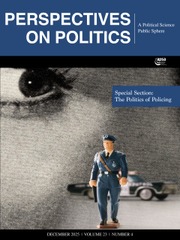Political scientists Deborah R. McFarlane and Wendy L. Hansen set out to answer two questions: why do states treat abortion differently, and what impact do state policies have on access to abortion? To answer these questions, the authors analyze the political situation in the United States from Roe v. Wade in 1973 until its overthrow with the Dobbs v. Jackson Women’s Health Organization decision in 2022.
For scholars unfamiliar with abortion politics in the United States, this book provides a good summary of how policies have evolved over the last 50 years. The authors review over 40 Supreme Court cases since Roe and the impact new justices have had on the outcome of these decisions, ending with Dobbs and the majority opinion’s false narrative on the history of abortion. They describe the characteristics of those seeking and providing abortions since 1973 and examine the economic, social, religious, and political forces that have impacted the state regulations passed and upheld by courts. Socioeconomic factors have an insignificant impact on the adoption of policies; Catholics, Mormons, and evangelical Protestants are less pro-choice than other religions; increasing the number of elected officials who identify as women positively impacts abortion protections; and Democratic politicians are more pro-choice than Republican. Case studies focused on New Mexico and Tennessee provide examples of protective and restrictive policies, respectively, with the former resulting from a Democratic trifecta and the latter from a Republican trifecta (i.e., the governor, state house, and state senate are all controlled by the same party). The authors end with a comparison of U.S. regulations with 18 countries in Western Europe, a region with the lowest abortion rates in the world where each nation provides full or partial funds for abortions. The case study of Ireland demonstrates that abortion liberalization there resulted from increasing secularization and the declining influence of the Catholic Church in the wake of both the Magdelene laundry scandal and Dr. Savita Halappanavar’s death from sepsis in 2012 following an incomplete abortion, where doctors refused to treat because they could discern a fetal heartbeat.
For scholars familiar with abortion and its history, the authors summarize much of what we already know. Abortion is a highly politicized issue. Appointments to the Supreme Court matter in abortion politics. Interest groups have been more successful in passing state restrictions than in winning support for protections. Most protections have been enacted in the Northeast and the West Coast, and most restrictions have been passed in the South and Midwest. These restrictions have led to a decrease in abortion providers and clinics in the latter regions, and an increase in the former states. Although abortion is safer than childbirth, it is more regulated than most other health services. The most prominent regulations include post-viability limits; parental involvement in a minor’s decision; restricted public funds, public facility use, and public employee participation; rules on clinical facilities; informed consent; and waiting periods. Protections are in place with Freedom of Choice Acts in 12 states and the District of Columbia, and the highest courts in 10 states have concluded that their state constitutions affirm the right to abortion.
Abortion rates have decreased, due in part to restricted abortion access, but also to increased use of effective, long-acting contraceptives. People of color and those in their twenties have higher abortion rates than older whites. Those who have an abortion have better physical, mental health, and socioeconomic outcomes. Most abortions take place in the first trimester, and medication abortions have been the majority form since 2020. The Dobbs decision exacerbated trends already underway: more women must travel out of state for procedures; more abortions occur later in pregnancy because of the cost of travel; online abortion requests have increased, as have unwanted births, domestic violence, and maternal mortality. Lastly, the authors debunk (in two repetitive sections) the three myths about abortion: that abortion regulations reflect public opinion, that they are mostly symbolic, and that they protect women from themselves. As the authors point out, the facts are that the majority of Americans are pro-choice, that abortion regulations have dire health impacts on women, and that women are perfectly capable of making decisions about their bodies.
Overall, this book is an excellent starting point for a scholar new to the field, less so for researchers who have been immersed in abortion studies for decades. Still, even academicians who keep up with the field and the daily news will benefit from the accessible synopsis of recent events. Moreover, the tables throughout the book are useful summaries of court cases, the changing composition of the court, state regulations, and state protections since Roe.


